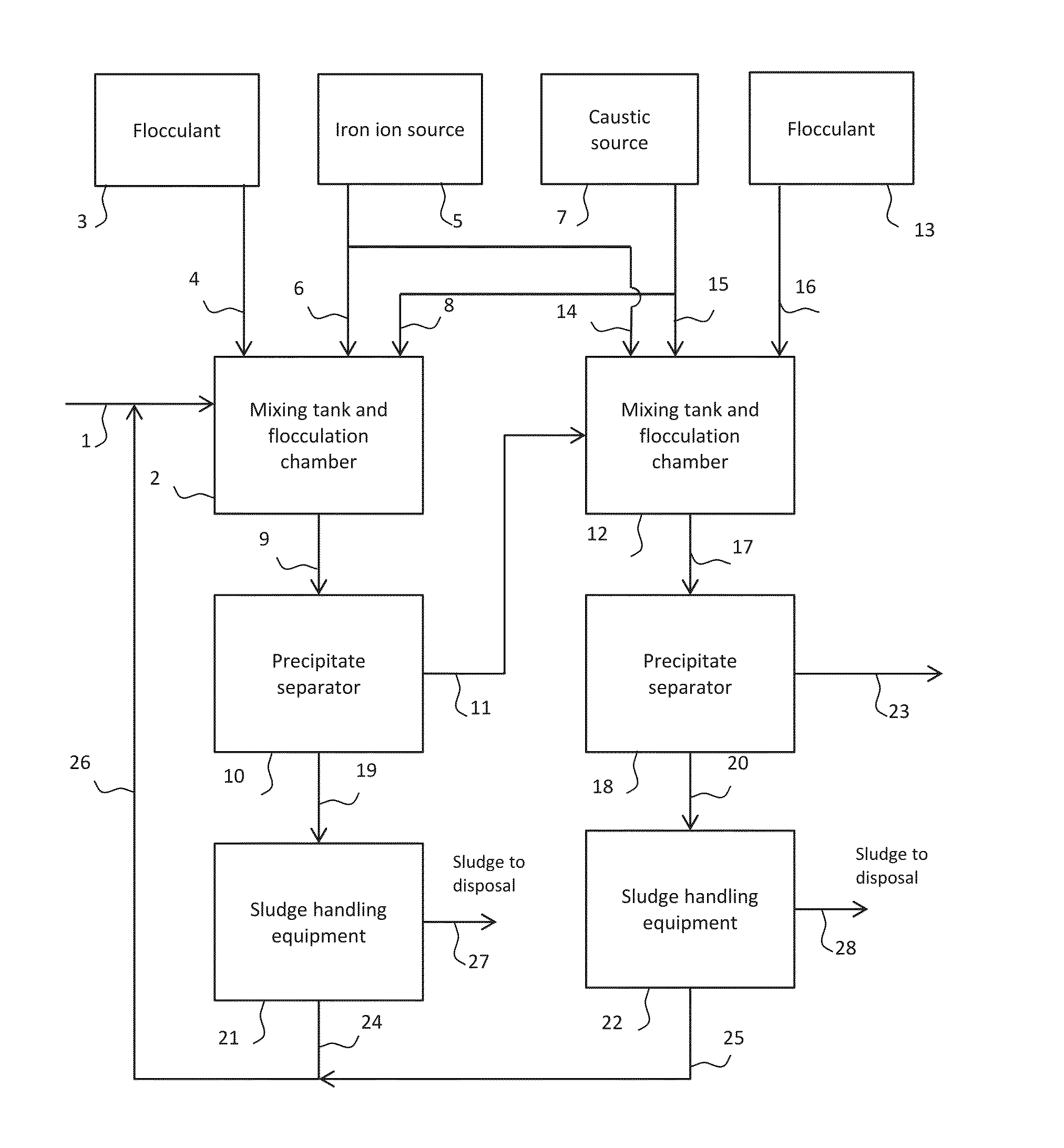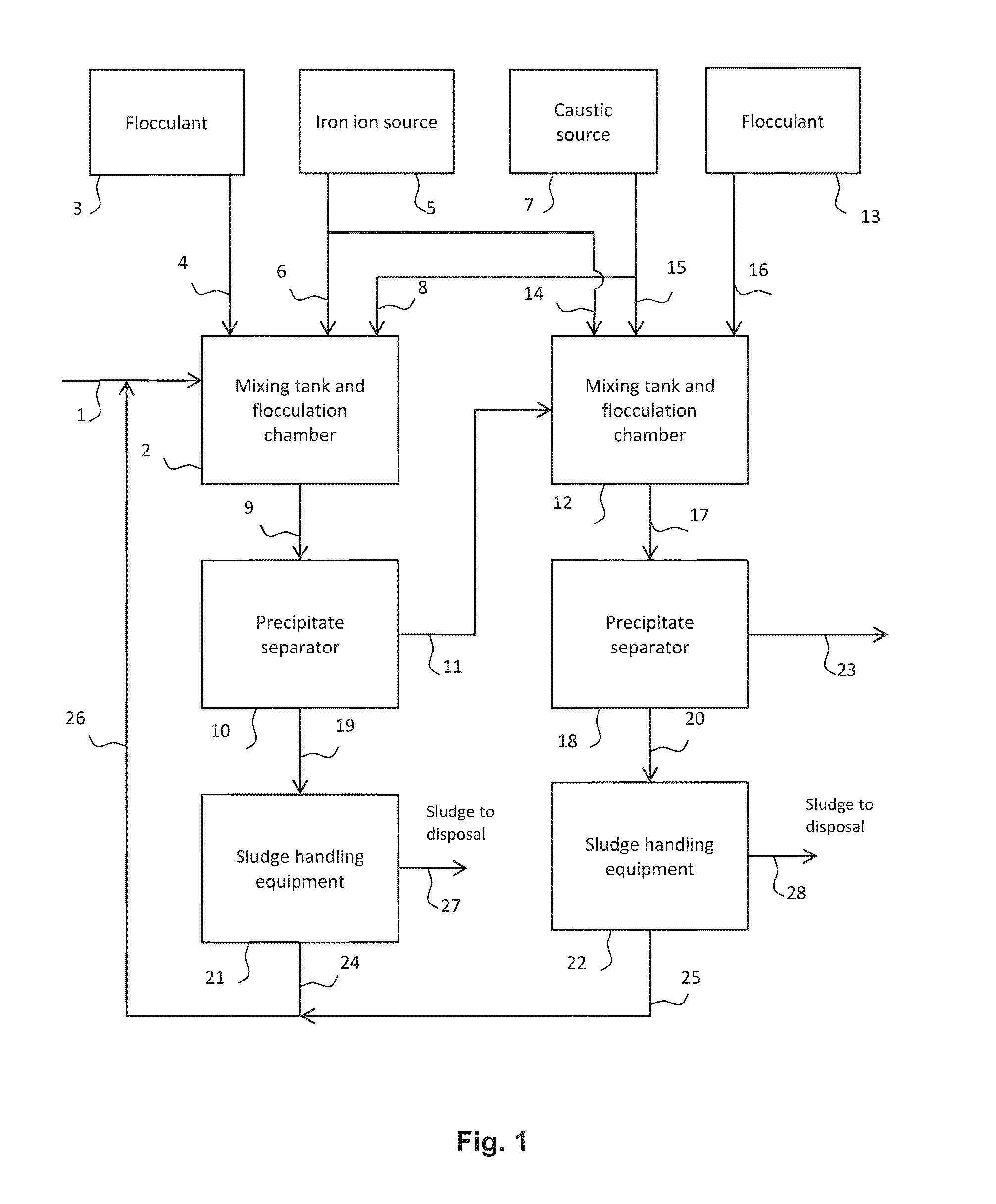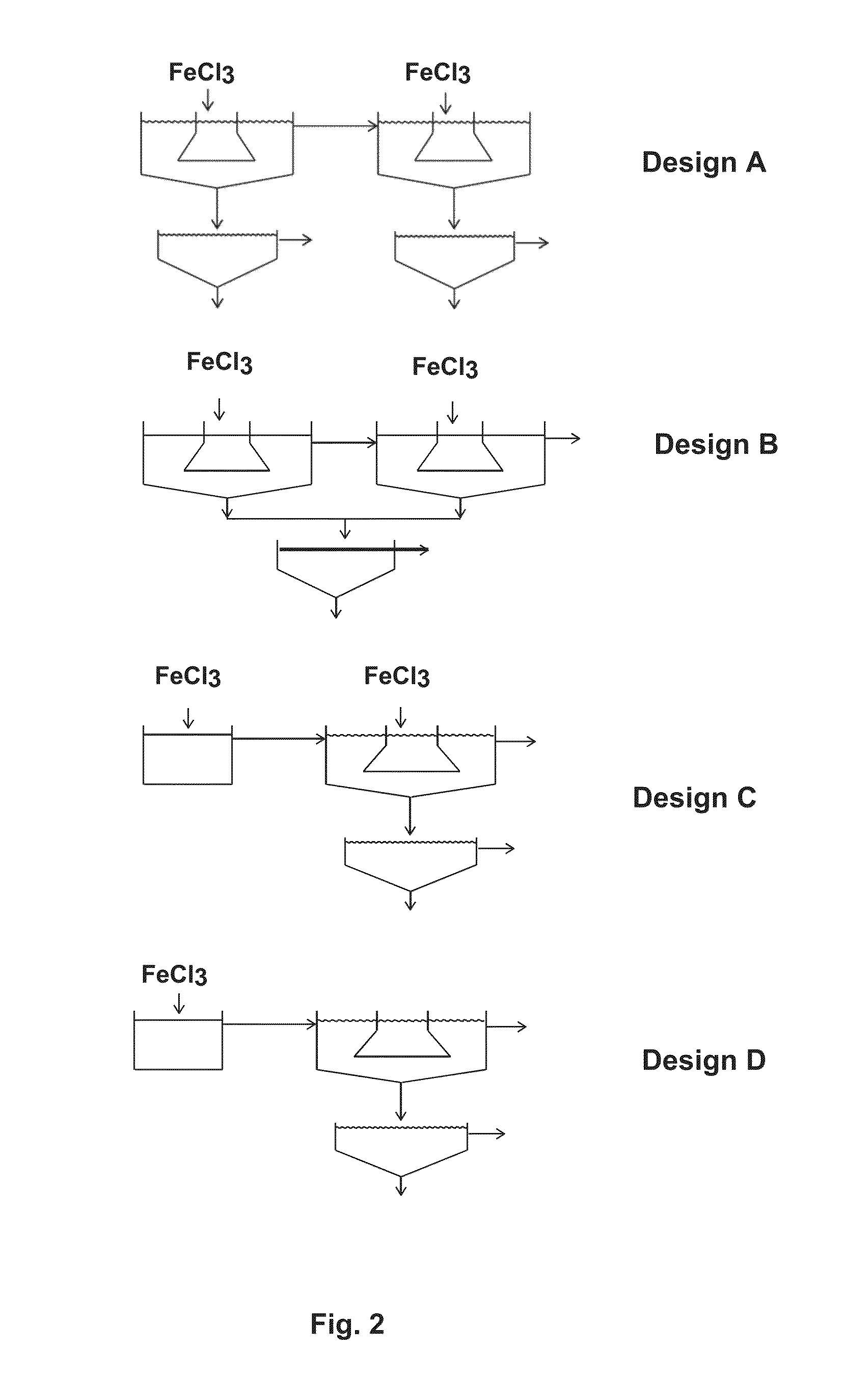Removal of metals from wastewater
a technology for wastewater and metals, applied in biological water/sewage treatment, separation processes, treatment water, etc., can solve the problems of ineffective reduction of dissolved metal concentration, inability to process certain types of crude, and difficulty in wastewater treatment to remove metals
- Summary
- Abstract
- Description
- Claims
- Application Information
AI Technical Summary
Benefits of technology
Problems solved by technology
Method used
Image
Examples
example 1
[0040]Co-precipitation studies were carried out on four samples of refinery waste water. The compositions of the samples were as follows:
Sample 1Sample 2Sample 3Sample 4pH 7.77.47.57.5ConductivitymS / cm. 3.33.72.42.9TSSmg / L141207212Oil + greasemg / L TurbidityNTU 12.81067212Alμg / L4642027061Asμg / L185.25.35.3Cdμg / L 0.380.085Crμg / L 2.05.0Cuμg / L 3.12213Pbμg / L 1.38.44.5Hgμg / L1.140.33Niμg / L20393622Seμg / L 95*988987Vμg / L1400 120017001700Znμg / L4016011035Feμg / L200 21401200240Namg / L540 600340440Kmg / L20241518Mgmg / L44623142Camg / L86766672Simg / L 3.22.83.73.8Clmg / L730 930520660SO4Mg / L320 266190240[0041]Average Se ratio was 70% Se(IV) and 30% Se(VI).
[0042]Screening tests for metals removal were carried out in laboratory jars. To simulate the two-stage Designs A and B, two laboratory jars were used representing (1) the mixing tank at low pH (stirred jar), (2) the first stage settler, (3) the mixing tank at high pH (stirred jar) and (4) the second stage settler. After stirring in the first jar at ...
example 2
[0053]Simulation of the two-stage designs C and D was carried out as described in Example 1 except for the elimination of the settling / clarification function from the first jar (to represent Design C) and also addition of the ferric ion in the first stage only (to represent Design D). Otherwise, the same conditions were used. The results are shown below in Tables 4 and 5.
TABLE 4Two Stage Ni Removal for Designs C, DCondi-Condi-Condi-Condi-Condi-tion 1tion 2tion 2′tion 3tion 3′pH = 9pH = 9pH = 8pH = 8pH = 8Design CSample 190%86%Sample 295%94%92%Sample 394%92%92%Sample 485%75%76%Design DSample 187%Sample 290%Sample 384%Sample 467%
TABLE 5Two Stage Se Removal for Designs C, DCondi-Condi-Condi-Condi-Condi-tion 1tion 2tion 2′tion 3tion 3′pH = 9pH = 9pH = 8pH = 8pH = 8Design CSample 165%66%72%Sample 270%72%80%Sample 366%75%74%Sample 456%69%71%Design DSample 153%Sample 262%Sample 372%Sample 468%
[0054]The results showed that Designs A and B showed an equal or better selenium removal than desi...
PUM
| Property | Measurement | Unit |
|---|---|---|
| Fraction | aaaaa | aaaaa |
| Fraction | aaaaa | aaaaa |
| Concentration | aaaaa | aaaaa |
Abstract
Description
Claims
Application Information
 Login to View More
Login to View More - R&D
- Intellectual Property
- Life Sciences
- Materials
- Tech Scout
- Unparalleled Data Quality
- Higher Quality Content
- 60% Fewer Hallucinations
Browse by: Latest US Patents, China's latest patents, Technical Efficacy Thesaurus, Application Domain, Technology Topic, Popular Technical Reports.
© 2025 PatSnap. All rights reserved.Legal|Privacy policy|Modern Slavery Act Transparency Statement|Sitemap|About US| Contact US: help@patsnap.com



